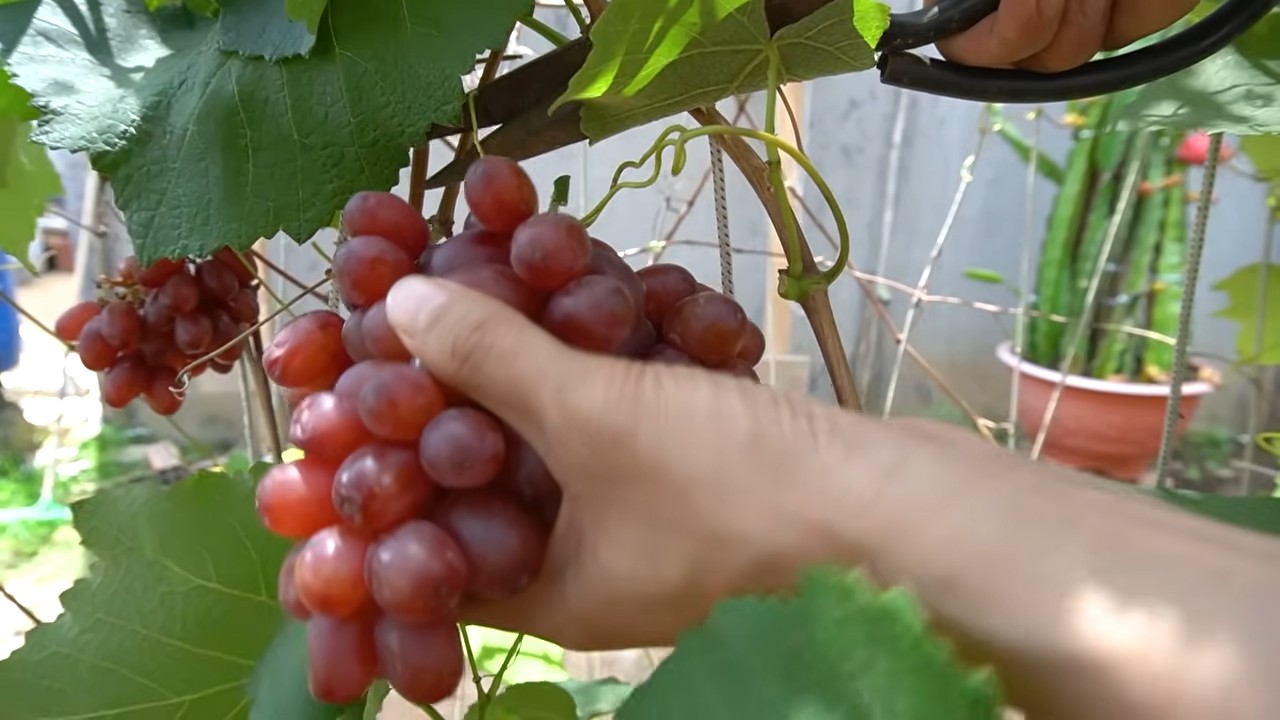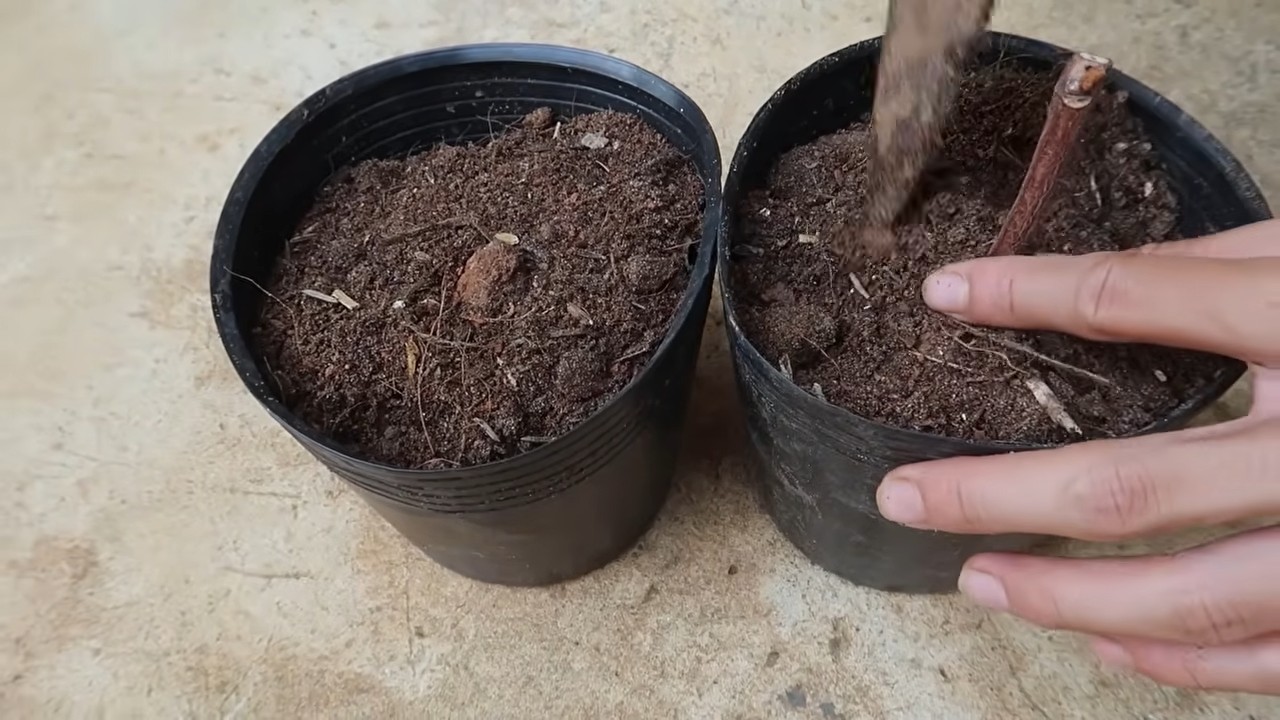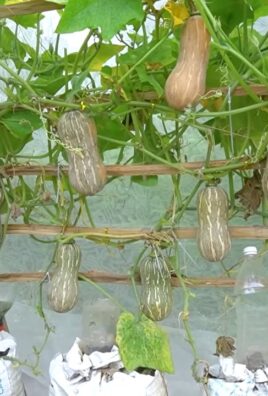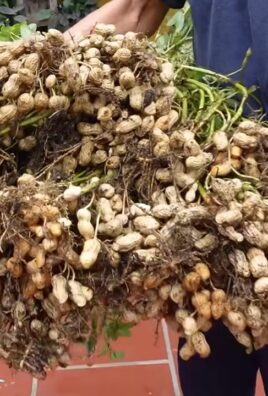Growing backyard grapes might seem like a task reserved for seasoned vineyard owners, but I’m here to tell you it’s totally achievable, even if you’re a beginner gardener like I once was! Imagine plucking juicy, sun-ripened grapes straight from your own backyard vine – perfect for snacking, making homemade jam, or even attempting your own small batch of wine. Sounds dreamy, right?
Grape cultivation has a rich history, dating back thousands of years to ancient civilizations like the Egyptians and Romans, who revered grapes not only for their delicious fruit but also for their symbolic significance. Today, while large-scale vineyards dominate the market, the joy of growing backyard grapes offers a unique connection to this ancient tradition, allowing us to cultivate our own little piece of agricultural history.
But why should you bother with the effort? Well, store-bought grapes often lack the intense flavor and freshness of homegrown varieties. Plus, you have complete control over the growing process, ensuring your grapes are free from harmful pesticides and chemicals. More importantly, learning how to grow your own grapes is a rewarding experience that connects you with nature and provides a sustainable source of delicious fruit for years to come. This DIY guide will equip you with the essential tricks and hacks to successfully cultivate your own thriving grapevines, no matter your experience level. Let’s get started!

Growing Your Own Backyard Grapes: A Beginner’s Guide
Okay, so you’re thinking about growing grapes in your backyard? Awesome! It’s totally doable, and there’s nothing quite like enjoying grapes you’ve grown yourself. It might seem intimidating, but trust me, with a little planning and effort, you can be harvesting your own delicious grapes in a few years. I’m going to walk you through everything you need to know, from choosing the right variety to pruning like a pro.
Choosing the Right Grape Variety
This is probably the most important decision you’ll make. You can’t just pick any grape and expect it to thrive. You need to consider your climate, soil type, and what you want to use the grapes for (eating, juice, wine).
* Climate: This is HUGE. Some grape varieties are hardy in colder climates, while others need long, hot summers. Look up your USDA plant hardiness zone. This will give you a good idea of what varieties will survive your winters.
* Soil: Grapes generally prefer well-drained soil. If your soil is heavy clay, you’ll need to amend it with organic matter to improve drainage. A soil test is always a good idea to determine the pH and nutrient levels. Grapes like slightly acidic soil (pH 6.0-7.0).
* Purpose: Are you planning on eating the grapes fresh, making juice, or trying your hand at winemaking? Different varieties are better suited for different purposes.
* Table Grapes: These are the grapes you’d find in the grocery store. They’re typically larger, sweeter, and have thinner skins. Some popular varieties include ‘Thompson Seedless’, ‘Flame Seedless’, and ‘Concord’.
* Juice Grapes: These grapes are often more tart and have a stronger flavor. ‘Concord’ is a popular choice for juice.
* Wine Grapes: These grapes have specific characteristics that make them ideal for winemaking, such as high sugar content and balanced acidity. Some popular varieties include ‘Cabernet Sauvignon’, ‘Chardonnay’, and ‘Merlot’. However, growing wine grapes successfully often requires more specialized knowledge and care.
My Recommendation: If you’re a beginner, I’d suggest starting with a hardy table grape variety like ‘Reliance’ (seedless, pink) or ‘Marquis’ (seedless, white). ‘Concord’ is also a good option, especially if you want to make juice or jelly.
Preparing the Planting Site
Okay, you’ve chosen your grape variety. Now it’s time to get your planting site ready. This is where the real work begins!
* Sunlight: Grapes need at least 6-8 hours of direct sunlight per day. Choose a location that gets plenty of sun.
* Soil Preparation: As I mentioned earlier, well-drained soil is crucial. Dig a hole that’s twice as wide and just as deep as the root ball of your grape vine. Amend the soil with plenty of compost or other organic matter. This will improve drainage and provide nutrients.
* Spacing: Grape vines need plenty of space to grow. Space them 8-10 feet apart in rows that are 10-12 feet apart. This will allow for good air circulation and prevent overcrowding.
* Trellising: Grapes are vines, so they need a trellis to support their growth. There are many different types of trellises you can use, from simple wire trellises to more elaborate wooden structures. I’ll talk more about trellising later.
Planting Your Grape Vines
Alright, the site is prepped, and you’ve got your grape vines in hand. Let’s get them in the ground!
1. Soak the Roots: Before planting, soak the roots of your grape vine in water for about an hour. This will help rehydrate them and give them a good start.
2. Planting Depth: Place the grape vine in the hole, making sure the top of the root ball is level with the ground. Don’t plant it too deep!
3. Backfill the Hole: Backfill the hole with the amended soil, gently tamping it down around the roots.
4. Water Thoroughly: Water the newly planted grape vine thoroughly. This will help settle the soil and encourage root growth.
5. Mulch: Apply a layer of mulch around the base of the vine. This will help retain moisture, suppress weeds, and regulate soil temperature.
Trellising Your Grape Vines
As your grape vines grow, they’ll need a trellis to support their weight and keep them off the ground. There are several different trellising systems you can use.
* Single-Wire Trellis: This is the simplest type of trellis. It consists of a single wire strung between posts. This is best for less vigorous varieties.
* Two-Wire Trellis: This trellis uses two wires, one above the other. This provides more support for the vines.
* Overhead Trellis (Arbor): This is a more elaborate trellis that creates a shaded area. It’s a great option if you want to grow grapes over a patio or walkway.
* Vertical Shoot Positioning (VSP): This system involves training the shoots to grow vertically along wires. It promotes good air circulation and sunlight penetration.
Building a Simple Two-Wire Trellis:
1. Set the Posts: Dig holes for your posts, spacing them 8-10 feet apart. The posts should be sturdy and at least 6 feet tall. Use treated lumber or metal posts for durability.
2. Install the Wires: Attach the wires to the posts, one at about 3 feet above the ground and the other at about 5 feet. Use wire staples or clips to secure the wires to the posts. Make sure the wires are taut.
3. Train the Vines: As the vines grow, train them to climb the trellis. Tie the main trunk to the lower wire and encourage the shoots to grow along the wires.
Watering and Fertilizing
Grapes need consistent watering, especially during dry periods. Water deeply and regularly, especially during the first year.
* Watering: Water deeply once or twice a week, depending on the weather. Avoid overwatering, as this can lead to root rot.
* Fertilizing: Fertilize your grape vines in the spring with a balanced fertilizer. Follow the instructions on the fertilizer label. You can also amend the soil with compost or other organic matter.
Pruning Your Grape Vines
Pruning is essential for grape production. It helps to control the size and shape of the vine, improve air circulation, and promote fruit production.
* When to Prune: Prune your grape vines in late winter or early spring, before the buds begin to swell.
* Why Prune: Grapes produce fruit on new growth that comes from one-year-old wood. Pruning removes excess growth and encourages the development of new fruiting wood.
* Pruning Methods: There are several different pruning methods, but the most common are cane pruning and spur pruning.
* Cane Pruning: This method involves selecting a few strong canes (one-year-old shoots) and cutting them back to about 8-12 buds each. Remove all other canes. This method is best for varieties that produce fruit on the middle portion of the cane.
* Spur Pruning: This method involves cutting back the one-year-old shoots to short spurs with only 2-3 buds each. This method is best for varieties that produce fruit on the base of the cane.
Pruning a Young Grape Vine (First Year):
1. Select the Strongest Shoot: In the first year, select the strongest shoot and tie it to the trellis.
2. Remove Other Shoots: Remove all other shoots.
3. Cut Back the Main Shoot: In late winter, cut back the main shoot to about 2-3 feet. This will encourage it to branch out.
Pruning a Mature Grape Vine (After the First Year):
1. Identify the One-Year-Old Wood: This is the wood that grew last year. It’s usually a lighter color than the older wood.
2. Choose Your Pruning Method: Decide whether you’re going to use cane pruning or spur pruning.
3. Remove Excess Growth: Remove any dead, damaged, or diseased wood. Also, remove any suckers (shoots that grow from the base of the vine) and water sprouts (vigorous, non-fruiting shoots).
4. Prune According to Your Chosen Method: If you’re using cane pruning, select a few strong canes and cut them back to about 8-12 buds each. If you’re using spur pruning, cut back the one-year-old shoots to short spurs with only 2-3 buds each.
Important Tip: Don’t be

Conclusion
So, there you have it! Growing backyard grapes might seem daunting at first, but with a little planning, patience, and the right techniques, you can transform your outdoor space into a personal vineyard. Imagine stepping outside your back door and harvesting your own juicy, sun-ripened grapes – the satisfaction is truly unparalleled. This DIY project isn’t just about saving money; it’s about connecting with nature, understanding the growing process, and enjoying the fruits (literally!) of your labor.
This method of growing backyard grapes offers a fantastic alternative to purchasing them from the store, giving you complete control over the quality and variety. You know exactly what goes into your grapes, avoiding potentially harmful pesticides and ensuring the freshest possible flavor. Plus, the process itself is incredibly rewarding. Watching your vines flourish and produce abundant harvests is a testament to your hard work and dedication.
But the best part? The possibilities are endless! Experiment with different grape varieties to find your favorites. Try growing table grapes for snacking, wine grapes for crafting your own homemade wine, or even juice grapes for creating delicious, natural juices. Consider training your vines along a pergola or trellis to create a beautiful and functional outdoor space. You could even explore different pruning techniques to maximize your yield and shape your vines to your liking.
Don’t be afraid to get creative and personalize your grape-growing experience. Add companion plants to attract beneficial insects and improve soil health. Incorporate organic fertilizers to nourish your vines and enhance their growth. The key is to learn as you go, adapt to your local climate, and enjoy the journey.
We encourage you to take the plunge and embark on your own backyard grape-growing adventure. It’s a rewarding experience that will provide you with fresh, delicious grapes for years to come. And most importantly, don’t forget to share your experiences with us! We’d love to hear about your successes, challenges, and any tips or tricks you’ve discovered along the way. Share your photos, stories, and questions in the comments below. Let’s build a community of backyard grape growers and learn from each other. Happy growing!
Frequently Asked Questions (FAQ)
What are the best grape varieties to grow in my backyard?
The best grape varieties for your backyard depend largely on your climate and personal preferences. For cooler climates, consider varieties like Concord, Niagara, or Seyval Blanc. These grapes are known for their cold hardiness and ability to thrive in shorter growing seasons. In warmer climates, you have a wider range of options, including Thompson Seedless, Cabernet Sauvignon, and Chardonnay. Research the specific growing conditions in your area and choose varieties that are well-suited to your local climate. Local nurseries and agricultural extension offices can provide valuable recommendations. Also, consider what you want to use the grapes for. Table grapes are great for snacking, while wine grapes are best for winemaking.
How much space do I need to grow grapes?
Grape vines require a significant amount of space to grow and thrive. As a general rule, allow at least 8-10 feet between vines in a row and 10-12 feet between rows. This spacing allows for adequate sunlight penetration and air circulation, which are essential for healthy growth and fruit production. If you’re growing grapes on a trellis or arbor, ensure that the structure is large enough to accommodate the mature size of the vines. Consider the mature size of the specific variety you choose, as some varieties can be more vigorous than others. If space is limited, consider growing grapes in containers, but be aware that container-grown grapes may require more frequent watering and fertilization.
How often should I water my grape vines?
Watering frequency depends on several factors, including the climate, soil type, and age of the vines. Young grape vines require more frequent watering than established vines. In general, water deeply and less frequently, allowing the soil to dry out slightly between waterings. During hot, dry periods, you may need to water more often. Avoid overwatering, as this can lead to root rot. A good rule of thumb is to water when the top inch of soil feels dry to the touch. Use a soaker hose or drip irrigation system to deliver water directly to the roots, minimizing water loss through evaporation.
What kind of fertilizer should I use for my grape vines?
Grape vines benefit from regular fertilization, especially during the growing season. Use a balanced fertilizer that contains nitrogen, phosphorus, and potassium. A fertilizer with a ratio of 10-10-10 or 12-12-12 is a good starting point. Apply fertilizer in the spring, just before the vines begin to grow. Avoid over-fertilizing, as this can lead to excessive vegetative growth and reduced fruit production. Organic fertilizers, such as compost and manure, are also excellent options for nourishing your grape vines. Conduct a soil test to determine the specific nutrient needs of your soil and adjust your fertilization program accordingly.
How do I prune my grape vines?
Pruning is essential for maintaining the health and productivity of your grape vines. Pruning removes dead, diseased, and unproductive wood, allowing for better air circulation and sunlight penetration. The best time to prune grape vines is in late winter or early spring, before the buds begin to swell. There are several different pruning methods, depending on the variety of grape and the training system you’re using. Consult a local expert or refer to a pruning guide for specific instructions. Remember to use sharp, clean pruning shears to avoid damaging the vines.
How do I protect my grapes from pests and diseases?
Grape vines are susceptible to a variety of pests and diseases, including Japanese beetles, grape phylloxera, powdery mildew, and black rot. Monitor your vines regularly for signs of infestation or disease. Implement preventative measures, such as proper pruning, good air circulation, and the use of disease-resistant varieties. If you encounter pests or diseases, treat them promptly with appropriate insecticides or fungicides. Consider using organic pest control methods, such as neem oil or insecticidal soap. Protect your ripening grapes from birds by netting the vines.
How long does it take for grape vines to produce fruit?
Grape vines typically take 2-3 years to begin producing fruit. The first year is focused on establishing the root system and developing the vine structure. In the second year, you may see some small clusters of grapes, but the yield will be limited. By the third year, your vines should be producing a more substantial crop. The amount of fruit produced will increase as the vines mature. Be patient and provide your vines with the care they need, and you’ll be rewarded with abundant harvests for years to come.
Can I grow grapes in containers?
Yes, you can grow grapes in containers, but it requires careful planning and attention. Choose a large container with good drainage. Select a grape variety that is well-suited to container growing, such as dwarf or compact varieties. Use a high-quality potting mix and provide regular watering and fertilization. Container-grown grapes may require more frequent watering and fertilization than grapes grown in the ground. Prune your container-grown grapes regularly to maintain their shape and size. Provide support for the vines, such as a trellis or stake.
What do I do with my grapes after harvesting?
Once you’ve harvested your grapes, the possibilities are endless! You can eat them fresh, make juice, jam, jelly, or even wine. Store your grapes in the refrigerator to keep them fresh for longer. If you have a large harvest, consider freezing some of the grapes for later use. Experiment with different recipes and find your favorite ways to enjoy your homegrown grapes. Sharing your harvest with friends and family is also a great way to celebrate your success.





Leave a Comment